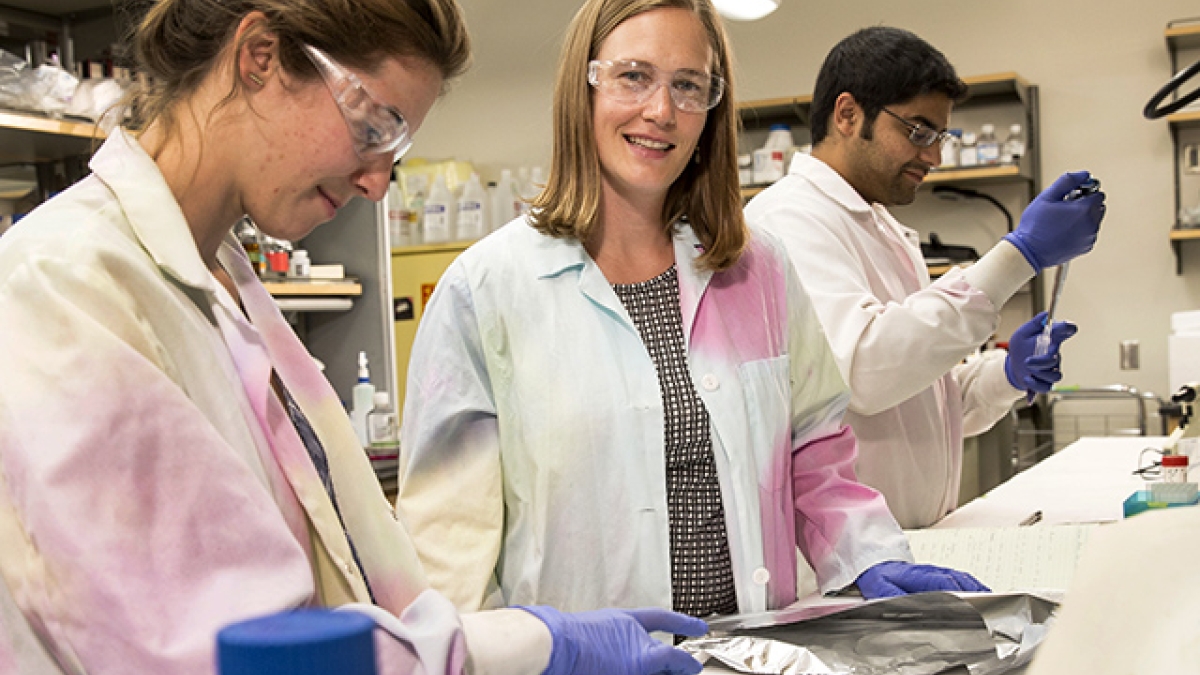Effort to improve neural repair earns NSF CAREER Award

Arizona State University researcher Sarah Stabenfeldt (center) is working to better understand the regenerative signals created as part of the body’s response to a traumatic brain injury. She hopes to develop therapeutic strategies to enhance and amplify the body’s natural regenerative efforts.
Photo by: Jessica Hochreiter/ASU
When it comes to traumatic brain injury, the human body responds in a variety of ways, often attempting to heal itself.
Arizona State University researcher Sarah Stabenfeldt is working to better understand the neural repair/regenerative signals created as part of the body’s injury response and develop therapeutic strategies to harness these signals. The end goal is to enhance and amplify the body’s natural regenerative efforts.
The research is being supported by a National Science Foundation (NSF) CAREER award earned by Stabenfeldt, an assistant professor in the School of Biological and Health Systems Engineering, one of the Schools of the Ira A. Fulton Schools of Engineering. The prestigious NSF grant recognizes emerging education and research leaders in engineering and science. The award provides $500,000 over five years to support both research and educational outreach activities including undergraduate and graduate student research experiences.
After a traumatic brain injury, the body initiates a host of molecular and cellular signals as part of a concerted complex response to the injury. This response includes recruitment of existing neural stem cells to the area of neural injury. This cell recruitment is believed to promote healing and repair.
Stabenfeldt will work to better understand this cell recruitment process, in part, by developing computational models in collaboration with Michael Caplan, an associate professor in the School of Biological and Health Systems Engineering. Stabenfeldt plans to use the knowledge to design therapies that capitalize on similar signaling mechanisms to enhance and potentially expedite the neural repair.
“We are interested in understanding how the body makes an effort to repair itself,” she said. “We can then tap into similar signaling mechanisms to potentially modulate and amplify cell recruitment mechanisms.”
The CAREER award also includes a component designed to train the next generation of researchers and engineers.
Stabenfeldt will build on a current undergraduate laboratory course developed by she developed with an ASU biomedical engineering colleague, lecturer Casey Ankeny, that employs a guided inquiry teaching method.
Guided inquiry is a student-centric teaching style that trains students how to pose and probe scientific questions as opposed to providing a predetermined step-by-step set of instructions for the students to follow. The CAREER award will enable Stabenfeldt to also develop and implement similar laboratory sessions geared for high school students.
“Most labs are like cookbooks, where you just follow the recipe,” she said. “The idea here is to provide a scientific topic/workspace and let the students formulate the hypothesis and experimental design. This type of course enables students to not only learn scientific method, but also put it into practice. It resembles a more authentic research experience.”